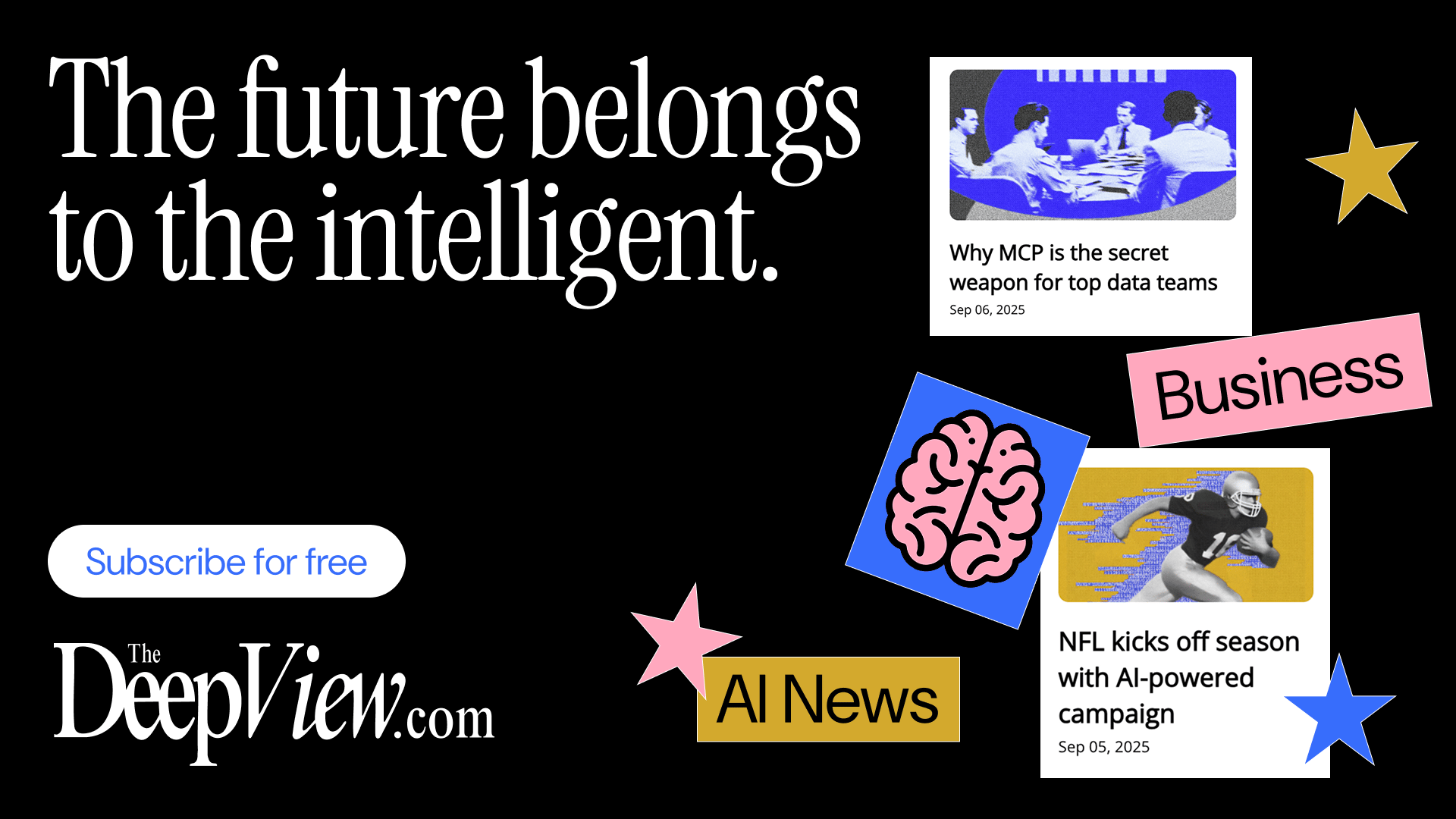- Null Pointer Club
- Posts
- Is Software Engineering Becoming More Like Assembly or More Like Art?
Is Software Engineering Becoming More Like Assembly or More Like Art?
In a world where AI writes code and frameworks abstract everything, what’s left for the human touch?
If you ask ten software engineers what coding feels like today, you’ll get two kinds of answers.
One will say: “It’s all abstraction now — APIs calling APIs, layers over layers.”
The other will say: “It’s finally creative again — we’re designing experiences, not just functions.”
Both are right.
Modern software engineering sits in a fascinating tension between precision and expression — between assembly and art.
The AI Insights Every Decision Maker Needs
You control budgets, manage pipelines, and make decisions, but you still have trouble keeping up with everything going on in AI. If that sounds like you, don’t worry, you’re not alone – and The Deep View is here to help.
This free, 5-minute-long daily newsletter covers everything you need to know about AI. The biggest developments, the most pressing issues, and how companies from Google and Meta to the hottest startups are using it to reshape their businesses… it’s all broken down for you each and every morning into easy-to-digest snippets.
If you want to up your AI knowledge and stay on the forefront of the industry, you can subscribe to The Deep View right here (it’s free!).
As automation, low-code tools, and AI copilots redefine what “writing code” means, developers are asking:
Are we moving closer to a mechanical future, or are we finally free to create like artists?
The Assembly Side: Precision, Performance, and Predictability
Let’s start with the assembly mindset — the roots of engineering discipline.
Assembly represents order, logic, and control. It’s where software is closer to the metal, where performance is everything, and where mistakes are costly.
Even today, the assembly mindset thrives in:
Systems programming: Think kernel design, compilers, embedded systems, or real-time engines.
Optimization challenges: The push for efficiency in AI models, data pipelines, and cloud infrastructure.
Reliability engineering: Where every byte matters, and determinism is king.
In this world, elegance is measured by how little code you write, not how beautiful it looks.
You’re not telling stories — you’re speaking machine language fluently.
That’s why Rust, C++, and Zig are still celebrated by developers who crave control and predictability. The “assembly spirit” hasn’t died; it’s just moved up a few layers.
The Artistic Side: Abstraction, Emotion, and Experience
But then there’s the other side — where coding feels like painting.
You’re not building systems; you’re crafting experiences. You’re designing flows that feel right for the user.
Frameworks like React, SwiftUI, and Flutter, or even entire ecosystems like Unity and Unreal, encourage this creative mindset.
Developers here think in color palettes, motion, emotion, not just functions and data types.
As AI handles repetitive coding and testing, human developers are focusing more on:
Interaction design: How users feel about a product.
Creative problem-solving: Building tools, automations, or interfaces that inspire delight.
Storytelling through interfaces: Every animation, layout, or micro-interaction tells a part of the brand’s story.
This is where software becomes art — not because it’s free of rules, but because it bends them gracefully.
The Middle Ground: Engineering as Design
The truth? Software engineering isn’t becoming more like assembly or more like art.
It’s becoming a fusion of both.
Modern developers must be bilingual — fluent in logic and empathy.
The best engineers today think like artists but ship like engineers.
They use abstraction not to hide complexity, but to manage it. They measure beauty not in brushstrokes, but in elegant architectures, intuitive UX, and expressive APIs.
Here’s how this blend is shaping modern dev culture:
Low-code tools democratize creation.
Platforms like Bubble, Webflow, and Replit’s Ghostwriter lower the barrier, turning creative ideas into functional prototypes fast.AI as a creative collaborator.
Tools like Copilot, ChatGPT, and Cursor transform how we brainstorm, debug, and iterate. The art lies in prompting well.A new metric for success: developer experience.
Frameworks are now judged by how enjoyable they are to build with — not just their technical capabilities.Hybrid roles are rising.
“Dev-designers,” “creative engineers,” and “technical artists” blur the lines between code and concept.
In this new landscape, creativity isn’t optional. It’s an edge.
The Philosophical Shift
Assembly once represented the machine-first world.
Art represents the human-first one.
The evolution of software engineering mirrors our evolving relationship with technology:
We began by serving the machine.
Now we build machines that serve imagination.
When you think about it, every function, every script, every system is a form of expression — a structured attempt to bring an idea into reality.
And that’s art, just in syntax.
What Developers Should Take Away
If software engineering feels more abstract, don’t resist it — reinterpret it.
Here’s how to stay grounded and inspired:
Stay close to the fundamentals. Understanding how things really work gives depth to your craft.
Build something delightful. Even if it’s small — a side project that expresses personality is worth more than sterile code.
Collaborate with designers. Learn their language. It’ll sharpen your sense of structure and beauty.
Embrace tools, but question dependence. Use AI, but keep your creativity human.
Conclusion: The Renaissance of Code
Software engineering is entering its renaissance — where logic meets imagination, and syntax meets soul.
Every pull request, every commit, every product demo is both a line of code and a brushstroke on a larger canvas of innovation.
So whether you lean toward assembly or art, remember:
You’re not just building software. You’re building meaning.
- Nullpointer Club
Where code meets curiosity.


Reply